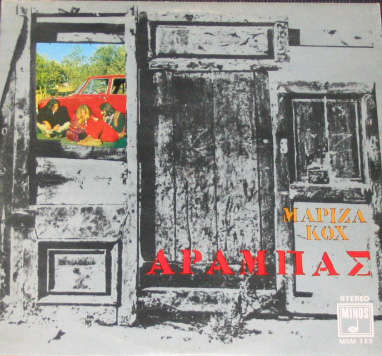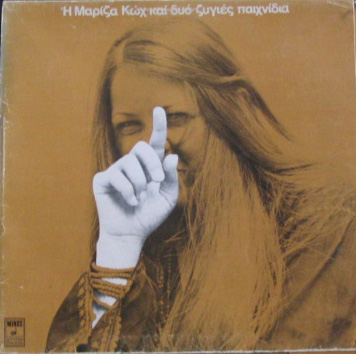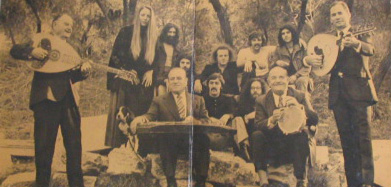|
Unlike the idealistic composers of the older generation, particularly Theodorakis, Savvopoulos’s songs seemed to advocate “a philosophy is which nothing is essentially true or real and anything can be appropriated to some else’s ends [3].” For the first time since the rebetika songs of the 1930’s and 40’s, Savvopoulos wrote songs of urban nihilism in which there were no heroes and all Greeks were implicated in the ugly realities of the times. Savvopoulos’s break with the musical tradition was as radical as his lyrics. Using a group of young Greek rock musicians and combining them with occasional traditional instruments, he created a musical collage that appealed to a generation fascinated by everything the Colonels’ regime disdained, including Bob Dylan and Pink Floyd. When Savvopoulos employed a beautiful blonde singer from the island of Santorini to sing in his club, she was, at first, a lesser star in his act, but she was attracted by the performers he worked with, and decided to perform the island songs she knew from her childhood, using Savvopoulos’s rock musicians as a backing. Signed up by the leading record company of the day she made her first record, Arabas in 1971.
Arabas became the first Gold Record in Greece. During a period when folk songs were being presented as the epitome of safe and suitable music for the young, it is hard to imagine what an impact this recording had. Koch’s voice had the same sharp edge as Legaki-Konitopoulou’s (she was a great admirer of Konitopoulou and the two singers had performed together) but less of the traditional, apparently artless character. Instead it has powerful, strident quality that commands attention, just as the singer, with her curtain of blond hair, did herself:
The reaction of many Greeks was one of shock. Koch had crossed the line between the sacred demotic song and the profane imported sounds of the west. It was a gesture made at a time when nobody could miss the point, and for many young Greeks she became an icon. After Arabas, Mariza began experimenting with a combination of traditional instruments and rock and with songs from other regions of Greece.
As on her second record, Mia sto karfi kai mia sto petalo (One on the Nail and the Other on the Horseshoe) a number of the songs on this LP are her own compositions, but there is a new element in this song, the introduction of children’s songs and traditional word games of the islands. On tour with her band after her initial successes, Koch was shocked to find that the average Greek child knew nothing about the traditional songs she had been raised on, and that most of the songs played for children were either completely imported or adapted from foreign models. From now on her career would change again in the direction of developing a repertoire of traditional songs for children and introducing children as performers on her own recordings. In 1979 she made two LP’s of children’s songs not only from the islands but from all over Greece. Then, in 1980, she decided to re-record her nisiotika successes and add to them, producing a double LP called, simply, Aigaio (Aegean). Again, she was original, in that she abandoned the cross-over rock/traditional style she had made her signature as a performer to perform the songs with a traditional island ensemble and a local children’s choir from Santorini.
In many ways this CD and another she made of music from the coast of Asia Minor (Ta Paralia) are her most traditional recordings, but they were made at a time when there was a musical vacuum in Athens, and when most young Greeks were listening to imported music. Mariza was already a popular star, and not expected to join the growing industry of “authentic” folk music recordings. She was returning to her roots, but still with a difference. By presenting these island songs with island folk musicians, she was crossing a new boundary. As she said on the cover notes:
(mp3 file)
From the double LP by Mariza Koch: Aigaio. CBS 88458, 1979. |



